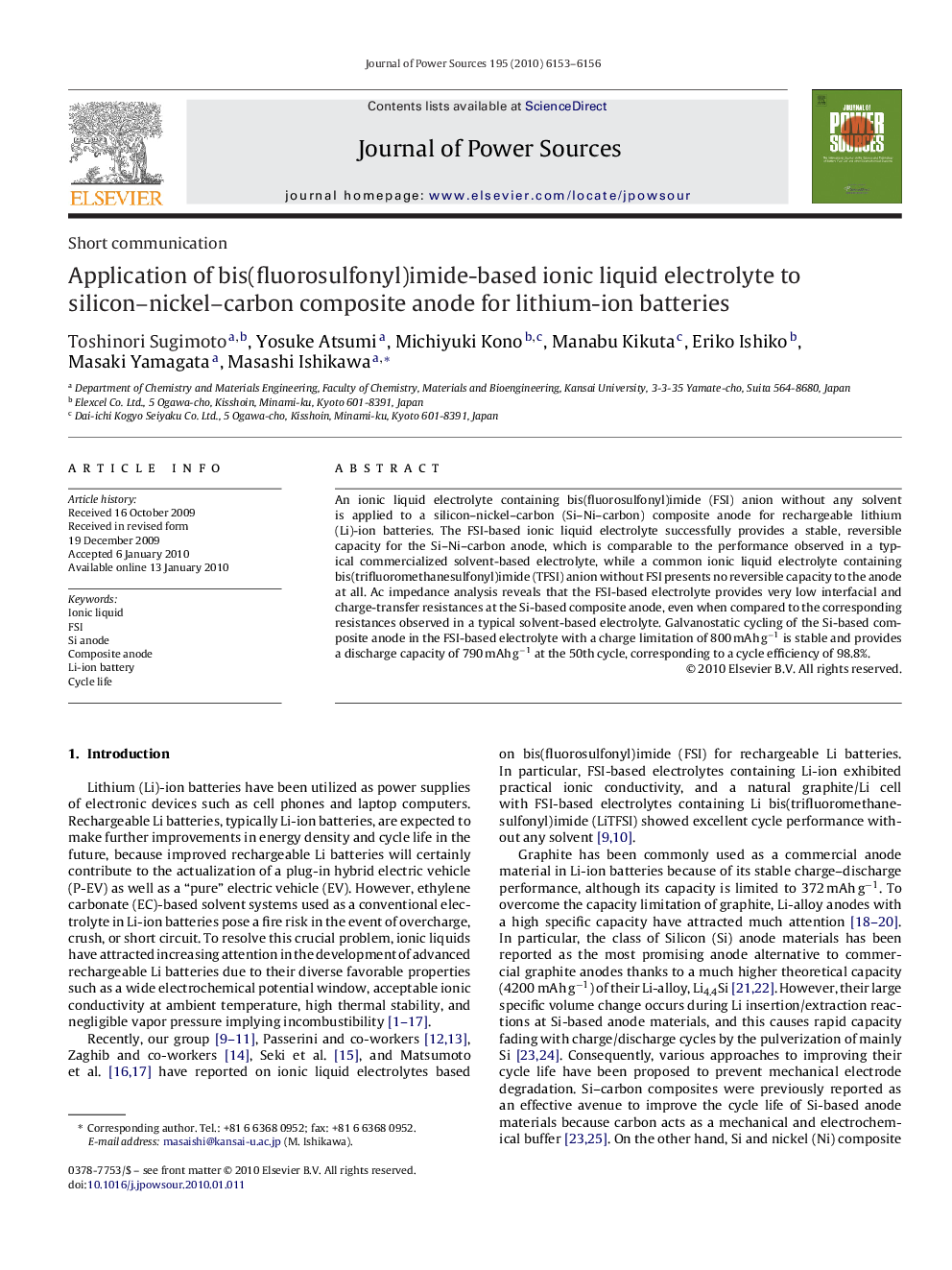| Article ID | Journal | Published Year | Pages | File Type |
|---|---|---|---|---|
| 1289019 | Journal of Power Sources | 2010 | 4 Pages |
An ionic liquid electrolyte containing bis(fluorosulfonyl)imide (FSI) anion without any solvent is applied to a silicon–nickel–carbon (Si–Ni–carbon) composite anode for rechargeable lithium (Li)-ion batteries. The FSI-based ionic liquid electrolyte successfully provides a stable, reversible capacity for the Si–Ni–carbon anode, which is comparable to the performance observed in a typical commercialized solvent-based electrolyte, while a common ionic liquid electrolyte containing bis(trifluoromethanesulfonyl)imide (TFSI) anion without FSI presents no reversible capacity to the anode at all. Ac impedance analysis reveals that the FSI-based electrolyte provides very low interfacial and charge-transfer resistances at the Si-based composite anode, even when compared to the corresponding resistances observed in a typical solvent-based electrolyte. Galvanostatic cycling of the Si-based composite anode in the FSI-based electrolyte with a charge limitation of 800 mAh g−1 is stable and provides a discharge capacity of 790 mAh g−1 at the 50th cycle, corresponding to a cycle efficiency of 98.8%.
